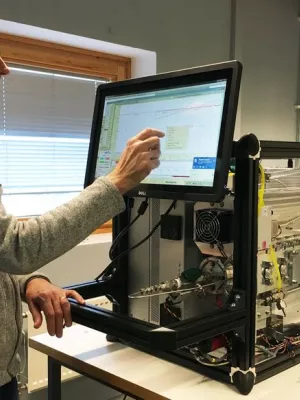
Erik Swietlicki
Professor

Aerosol decadal trends - Part 2: In-situ aerosol particle number concentrations at GAW and ACTRIS stations
Author
Summary, in English
We have analysed the trends of total aerosol particle number concentrations (N) measured at long-term measurement stations involved either in the Global Atmosphere Watch (GAW) and/or EU infrastructure project ACTRIS. The sites are located in Europe, North America, Antarctica, and on Pacific Ocean islands. The majority of the sites showed clear decreasing trends both in the full-length time series, and in the intra-site comparison period of 2001-2010, especially during the winter months. Several potential driving processes for the observed trends were studied, and even though there are some similarities between N trends and air temperature changes, the most likely cause of many northern hemisphere trends was found to be decreases in the anthropogenic emissions of primary particles, SO2 or some co-emitted species. We could not find a consistent agreement between the trends of N and particle optical properties in the few stations with long time series of all of these properties. The trends of N and the proxies for cloud condensation nuclei (CCN) were generally consistent in the few European stations where the measurements were available. This work provides a useful comparison analysis for modelling studies of trends in aerosol number concentrations.
Department/s
- Nuclear physics
- MERGE: ModElling the Regional and Global Earth system
Publishing year
2013
Language
English
Pages
895-916
Publication/Series
Atmospheric Chemistry and Physics
Volume
13
Issue
2
Document type
Journal article
Publisher
Copernicus GmbH
Topic
- Subatomic Physics
Status
Published
ISBN/ISSN/Other
- ISSN: 1680-7324